Introduction
This training document will explain how to set up artwork in our proven and effective way by conforming to specific requirements for an exceptional sandcarving result every time.
It will also explain how to set up your artwork in an efficient manner.
Create Artwork that is Easy to Blast
Before printing, make sure your artwork is always black and at least at C0, M0, Y0, K100. If it’s not set to a dark enough black you will experience difficulties exposing the artwork as it won’t block light as effectively during exposure.
Choice of Font
When choosing fonts, it is always best to use a non-serif font as they have a consistent thickness throughout the lettering. But in case you still want to use other font types (e.g. script/cursive and serif fonts), you may get away with thickening the text to make it suitable for engraving. It will also depend on the font size on the engraving area. Fonts on a very small engraving area may still not work even after thickening the lines, as it will look either too thin or too thick, unpleasant, and illegible when engraved.

Line Width Limitations
Aim to keep at a minimum 0.7pt thickness for any lines in the artwork.
Reversing an Image
Reversing an image/graphic is simple as long as it’s vectored. Black areas of the artwork are the engraved areas, so if you would like to invert this, change the white areas to black and black to white.
Setting up Gang Sheets for Best Use of Resist
Use the maximum width of your resist when setting up the gang sheet. Place artwork next to each other like a grid to make efficient use of the resist.
Example of Gang sheet
